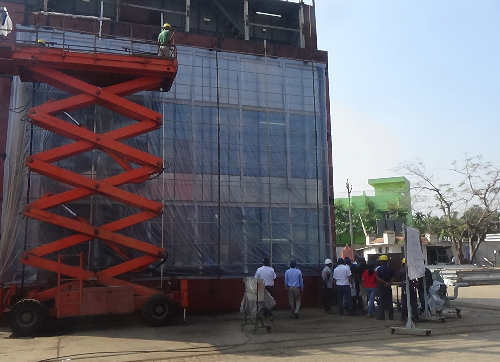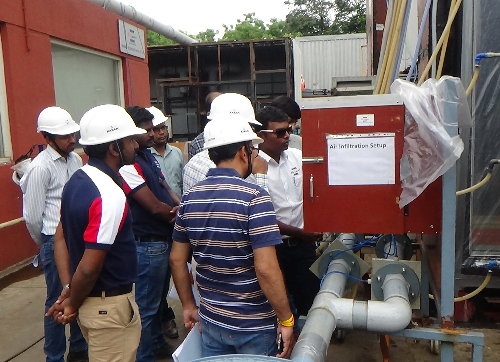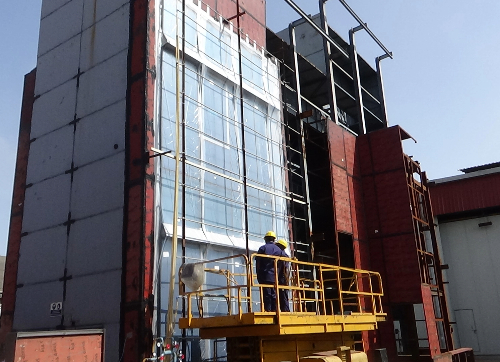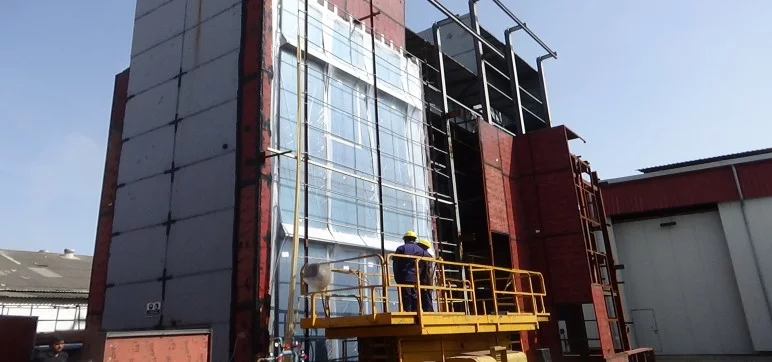In the ever-evolving world of architecture and construction, modern buildings have reached new heights, quite literally. The 21st century has witnessed a remarkable transformation in the way buildings are designed and constructed. Traditional low-rise structures have given way to towering high-rises, and with this evolution, new challenges have arisen.
The evolution of modern buildings into high-rises is a result of several factors, including rapid urbanisation, population growth, and the need to make efficient use of limited urban space. High-rise buildings, defined as structures that rise significantly above the surrounding environment, are not only architectural marvels but also essential solutions to urban density and the growing demand for commercial and residential spaces.

One critical aspect of high-rise building design and construction is the control of air infiltration. Air infiltration refers to the unintentional leakage of air into and out of a building, which can have significant consequences for energy efficiency, occupant comfort, and indoor air quality. This is why air infiltration testing is crucial for building façades.
In the realm of construction, the integrity of a building’s envelope cannot be overstated. Before we delve into how and why we should perform Air Infiltration tests on building façades, windows and doors, let us first understand the consequences of air leakage beyond the allowable parameter that the curtain wall system or window or door is designed for;
Energy Inefficiency: Air leakage can lead to increased heating and cooling costs as conditioned air escapes, reducing energy efficiency.
Thermal Discomfort: Inconsistent indoor temperatures due to drafts or cold spots can cause discomfort for occupants.
Moisture Issues: Air infiltration can introduce moisture into the building, leading to condensation, mold growth, and structural damage.
Reduced Indoor Air Quality: Contaminants, allergens, and pollutants from the outside can enter the building through air leaks, impacting indoor air quality.
Structural Damage: Over time, air leakage can lead to structural damage, including deterioration of building materials.
Operational Costs: Increased energy use and maintenance requirements can result in higher operational costs for building owners.
Environmental Impact: Excessive energy consumption due to air leakage contributes to a higher carbon footprint.
Health Concerns: Mold and poor indoor air quality can lead to health issues, such as respiratory problems, for building occupants.
A façade or window is installed at the project site with hundreds of panels that are fabricated and glazed at the factory
and have thousands of joints. There is a possibility of conditioned air leaking through these joints.

The energy efficiency of a façade is checked by accurately measuring the air leakage through the linear joints of windows, and curtainwall systems at specified differential pressures. The lower the air leaks, the lower the loss of conditioned air through the system.
Testing a system for air infiltration can save millions of units of power during the lifetime of the building. Much of this loss can be minimised if a well-designed and tested system is installed by the builder or developer.
ASTM E 283 is a widely recognised standard used for testing the air leakage rate of building enclosures. It is the “Standard Test Method for Determining Rate of Air Leakage Through Exterior Windows, Curtain Walls, and Doors Under Specified Pressure Differences Across the Specimen”.
The primary purpose of ASTM E 283 is to evaluate the quantum of air leakage through windows, curtain walls, and doors when subjected to specified pressure differences. This standard is frequently used to assess the performance of the building components in terms of their resistance to air infiltration, which is an essential factor in achieving energy efficiency and maintaining indoor environmental quality. ASTM E 283 is the test standard conducted at an accredited third-party laboratory.
Equally important is to conduct the test at the site which checks for consistency and quality of installation thereby having accountability and ensuring a better-performing system.

The ASTM E 783 (Standard Test Method for Field Measurement of Air Leakage Through Installed Exterior Windows and Doors) is a testing standard that describes the procedures to determine air leakage rates of installed windows and doors.
This testing standard is most often specified to determine the air leakage of newly installed windows and doors. The testing can be adapted for use to correlate potential paths of leakage from within the installed openings. This is helpful to identify air infiltrations so they can be controlled or eliminated.
The testing is performed by sealing a chamber to the interior or exterior face of the test specimen, supplying or exhausting air from the chamber at a rate required to maintain the specified test pressure, and measuring the airflow lost or gained across the testing chamber.
In conclusion, the evolution of modern buildings into high-rises has brought forth exciting innovations in architectural design and construction. However, with these advancements comes the crucial responsibility of ensuring air infiltration control in building façades. By conducting air infiltration testing through third-party laboratory tests and on-site inspections, high-rise buildings can achieve enhanced energy efficiency, indoor air quality, occupant comfort, and overall sustainability. The importance of such testing cannot be overstated, as it is essential for the long-term success and environmental impact of these architectural marvels in our ever-growing urban landscapes.
(Winwall Technology India Pvt Ltd is an ISO 17025 NABL accredited third-party testing laboratory and is accredited to perform Air Infiltration Tests as per ASTM, BS EN, AS/NZS and NBR standards.)














